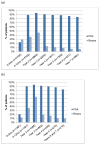How Active is Active Surveillance? Intensity of Followup during Active Surveillance for Prostate Cancer in the United States
- PMID: 26946161
- PMCID: PMC5010531
- DOI: 10.1016/j.juro.2016.02.2963
How Active is Active Surveillance? Intensity of Followup during Active Surveillance for Prostate Cancer in the United States
Abstract
Purpose: While major prostate cancer active surveillance programs recommend repeat testing such as prostate specific antigen and prostate biopsy, to our knowledge compliance with such testing is unknown. We determined whether men in the community receive the same intensity of active surveillance testing as in prospective active surveillance protocols.
Materials and methods: We performed a retrospective cohort study of men 66 years old or older in the SEER (Surveillance, Epidemiology and End Results)-Medicare database. These men were diagnosed with prostate cancer from 2001 to 2009, did not receive curative therapy in the year after diagnosis and underwent 1 or more post-diagnosis prostate biopsies. We used multivariable adjusted Poisson regression to determine the association of the frequency of active surveillance testing with patient demographics and clinical features. In 1,349 men with 5 years of followup we determined the proportion who underwent testing as intense as that recommended by the Sunnybrook Health Sciences Centre and PRIAS (Prostate Cancer Research International Active Surveillance) programs, including 14 or more PSA tests and 2 or more biopsies, and The Johns Hopkins program, including 10 or more prostate specific antigen tests and 4 or more biopsies.
Results: Among 5,192 patients undergoing active surveillance greater than 80% had 1 or more prostate specific antigen tests per year but fewer than 13% underwent biopsy beyond the first 2 years. Magnetic resonance imaging was rarely done during the study period. On multivariable analysis recent diagnosis and higher income were associated with a higher frequency of surveillance biopsy while older age and greater comorbidity were associated with fewer biopsies. African American men underwent fewer prostate specific antigen tests but a similar number of biopsies. During 5 years of active surveillance only 11.1% and 5.0% of patients met the testing standards of the Sunnybrook/PRIAS and The Johns Hopkins programs, respectively.
Conclusions: In the community few elderly men receive the intensity of active surveillance testing recommended in major prospective active surveillance programs.
Keywords: SEER program; aged; prostatic neoplasms; standard of care; watchful waiting.
Copyright © 2016 American Urological Association Education and Research, Inc. Published by Elsevier Inc. All rights reserved.
Figures
Comment in
-
Editorial Comment.J Urol. 2016 Sep;196(3):726. doi: 10.1016/j.juro.2016.02.3003. Epub 2016 Jun 13. J Urol. 2016. PMID: 27311409 No abstract available.
References
-
- National Comprehensive Cancer Network. [Accessed January 25, 2016];Clinical Practice Guidelines: Prostate Cancer Treatment. 2016 http://www.nccn.org/professionals/physician_gls/pdf/prostate.pdf.
-
- Womble PR, Montie JE, Ye Z, et al. Contemporary Use of Initial Active Surveillance Among Men in Michigan with Low-risk Prostate Cancer. Eur Urol. 2015;67:44. - PubMed
-
- Loeb S, Berglund A, Stattin P. Population Based Study of Use and Determinants of Active Surveillance and Watchful Waiting for Low and Intermediate Risk Prostate Cancer. The Journal of urology. 2013 - PubMed
-
- Weerakoon M, Papa N, Lawrentschuk N, et al. The current use of active surveillance in an Australian cohort of men: a pattern of care analysis from the Victorian Prostate Cancer Registry. BJU Int. 2015;115(Suppl 5):50. - PubMed
-
- Cooperberg MR, Carroll PR. Trends in Management for Patients With Localized Prostate Cancer, 1990–2013. JAMA. 2015;314:80. - PubMed
Publication types
MeSH terms
Substances
Grants and funding
LinkOut - more resources
Full Text Sources
Other Literature Sources
Medical
Research Materials
Miscellaneous


